The Year in Review – Wedding & Portrait
The impact of COVID and lockdowns on the wedding and portrait industry has been significant, and the challenges they’ve brought have been immense, but not insurmountable. Photographers were forced to find new ways to express themselves creatively and look at innovative ways to remain viable. How have photographers prospered and what have they learnt? Sophia Hawkes reports.
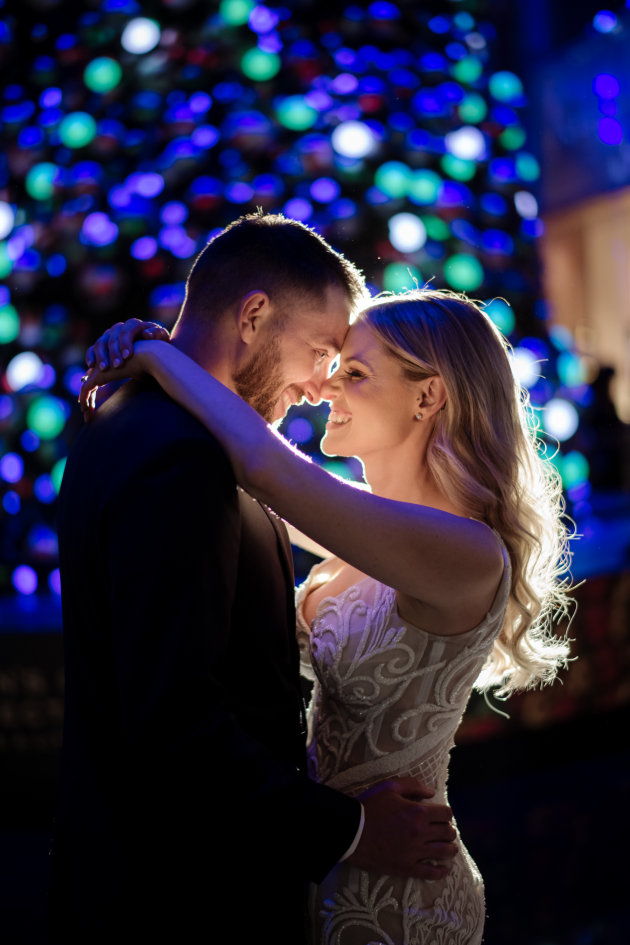
A changed market
As COVID restrictions rained down, there was a flow of smaller weddings and elopements, while larger weddings ebbed. “The restriction on the number of guests is changing all the time; couples are scared of hiring big teams for their weddings,” says Aries Tao. Based in Sydney, Tao is the executive photographer and creative director at Clover Image where the team specialises in fine art wedding photography. Byron Bay wedding photographer Van Middleton elaborates. “The main change for us as photographers is having to change to smaller scale events, without some of the big crowds that can add colour and energy to wedding collections,” he says.
Middleton adds that instead of a predictable and booked calendar of weddings, photographers are now facing huge gaps with no weddings only to have a rush of last-minute bookings. Adapting to this is more challenging for solo operators, but studios with multiple photographers can more easily manage a situation where they are suddenly faced with the prospect being double-booked.
Based in Melbourne, wedding photographer Jerome Cole had a full season booked, set to start in July. “I was so pumped; it was going to be amazing. I had my final meetings with couples checking the details and then...bang! Lockdowns began again”. Even when restrictions eased after each lockdown there was a delay in weddings going back to normal as dancing was not permitted. Towards the second part of 2020 he found couples were postponing more frequently, but now after several lockdowns couples are deciding to go ahead even if they can’t have the exact wedding they envisaged. “There's been a shift in mindset, where people decide they’re not going to postpone a second, third, or even fifth time,” Cole says.
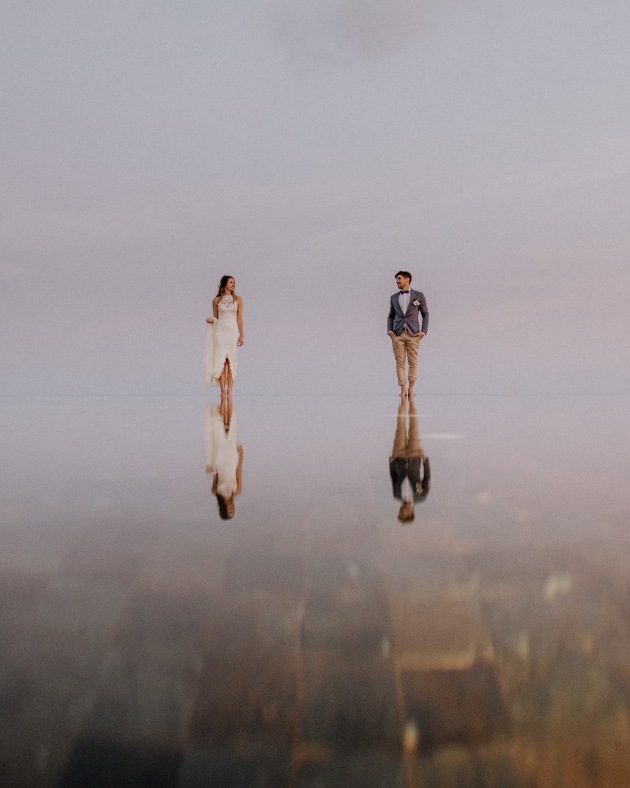
The portrait industry wasn’t immune to the impact of COVID restrictions either. “There were times, especially in the beginning of the pandemic, when I felt overwhelmed with worry,” says Elizabeth Messina, who’s based in Southern California. “Virtually all of my jobs were cancelled or postponed. The uncertainty was visceral.” Since gatherings in larger groups was no longer an option and travelling for destination shoots wasn’t either, Messina did more intimate portraits of one or two people, often in her studio. “I had a big destination job that was postponed twice. Eventually my clients came to my home and we spent the day together making beautiful images,” she says.
Melbourne-based portrait photographers Rowena Meadows also found that lockdowns played havoc with her business. “I think the repeated lockdowns and cancellations of events, holidays, and plans in general led to a lot of people stopping making plans all together. Even when we were out of lockdown and allowed to work in people’s homes, it was much harder to book clients because of that underlying desire to avoid the disappointment of more cancelled plans. That’s been the hardest,” she says.
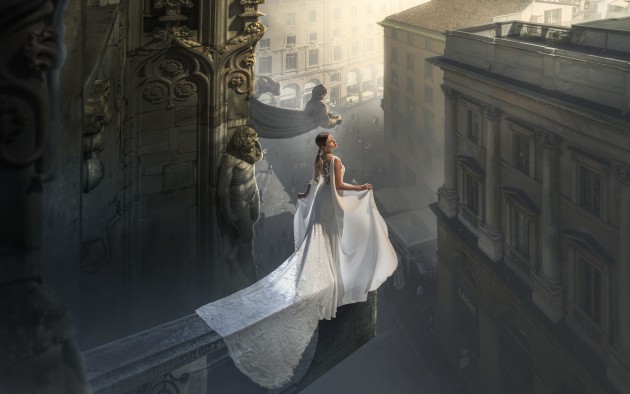
Keeping a wide scope
Roger Tan has an established a studio in Sabah, Malaysia, and specialises in destination weddings and pre-wedding shoots. As the pandemic led to travel restrictions, Tan was unable to travel overseas to shoot. Finding a level of acceptance of the predicament has helped him get through it. He adapted by focusing on two markets: high-end portraits and real estate. He also offered online Photoshop courses. “One of the main lessons learnt is to adapt to changing circumstances quickly, rather than staying put and waiting for the situation to return to normal,” he says.
Tao also had a large overseas clientele before the pandemic hit. His advice is to not hold on to a too-narrow focus with regards to what clients you will work with. “Don't put all your eggs in the same basket. I had a large international client base pre-COVID, and of course, all overseas bookings are all cancelled”. He also chose to branch out globally by offering photography courses online, along with widening the scope of services to his wedding clients. “We started offering combined videography and photography services to our clients, and so far, it’s worked out great”.
Middleton shares Tao’s view of keeping your vision broad. “It’s important in any industry to be nimble and flexible. We should always be looking at opportunities outside what we are used to, because exploring other avenues of income and training ourselves in other skillsets can protect us from disaster, but can also open the door to new and exciting opportunities,” says Middleton. Having too narrow and restricted a focus can lead photographers to miss out on potentially exciting and lucrative business endeavours.
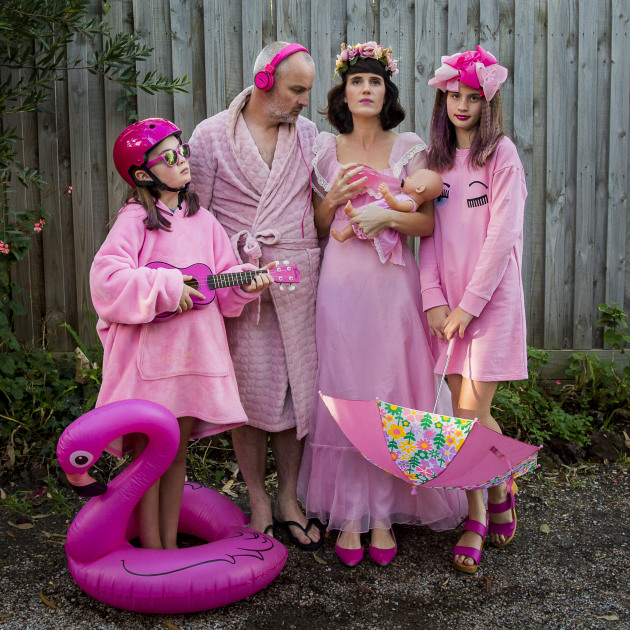
Messina understands the importance of being a specialist and being seen as a master of your craft, but cautions that photographers need to be mindful of potentially limiting one’s opportunities in a business environment that many have been impacted by. “I think something I learned during this time is how important it is to diversify. For me, that meant more small shoots with only my subject and myself, and no crew, selling prints online, and teaching,” she says. Through her online teaching, she also had the opportunity to mentor photographers. “I value connecting with other photographers so much. I wish someone had been there for me when I was young, unsure, and trying to find my way”.
Prospering through challenges
Identifying the changes and understanding how they impact the market will help you adapt and prosper. Middleton’s advice is to look at new business environments as opportunities. “It’s hard sometimes, but being positive in the way we look at our situation and our future is the first movement towards improving our lot,” he says.
Cole reflects on how easy it is to feel stagnant when stuck at home during lockdowns – a sentiment shared by many. “It's hard to keep your motivation up, because in lockdown your enquires go down and you don’t get the same feedback from what you’re putting out there,” he says. After coming out of the second lockdown, Cole really noticed a difference between his colleagues who had kept their motivation up and remained active on social media and the ones who hadn’t. Needless to say, those who were active were able to rely on the momentum once restrictions eased again.

The resilience of photographers wasn’t lost on Meadows either. “I've seen a lot of inspiring photographers continue to roll with the knocks COVID keeps delivering. There were the front yard or doorstep portraits, a push for print sales, and even remote Facetime portrait sessions. In Melbourne, it’s been tough because last year the front yard sessions were deemed against the rules, with hefty business fines if caught,” she says.
Living in Melbourne, Cole has experienced numerous lockdowns since the beginning of the pandemic. During these lockdowns he started recording home videos as a coping mechanism, but also as a way to learn new skills. During the sixth lockdown, Cole made a video about the first day of home schooling. He described the day as “terrible”, and was transparent about that fact in the video. He shared it on social media and the video was spread widely. Shortly after, enquiries for video work started coming in.
Silver linings
That small creative acts can yield big and often surprising outcomes is something Meadows has also discovered. “I never would have believed it if someone told me I'd be selling puzzles with my face on them to people all across the globe. In the first lockdown of 2020, my family made some monochromatic portraits in our driveway, which went viral on the Internet, making my Instagram following explode, literally overnight. I think I went from 5,000 followers to 45,000 in a few days. I still don't really understand why people connected with the images, but with ongoing lack of work and repeated lockdowns, we decided to make the images into a 1,000-piece puzzle which ended up generating the majority of my income in 2020. It's still truly surreal to me,” says Meadows.
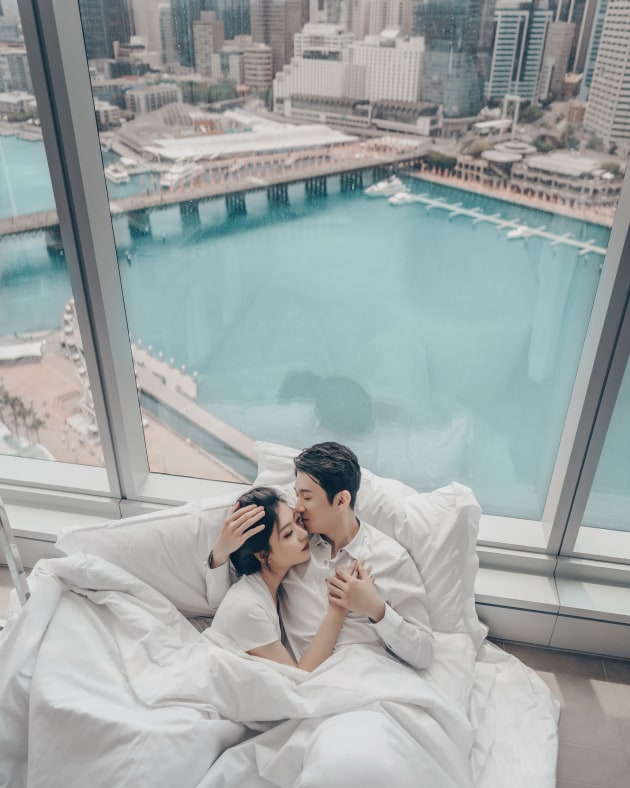
As some things are lost, others are gained. Cole says smaller weddings bring amazing photo opportunities, and the possibility of creating unique portraits. Likewise, in Middleton’s experience, smaller weddings allowed for more intimate and adventurous shoots. “With big weddings come rigid timelines, strict run sheets, and less flexibility on photo locations and timeframes. With elopements and micro-weddings, couples are able to bend their plans a little bit more, and this means the chance to take couples to more adventurous settings further afield. This has opened up possibilities in terms of locations: dramatic clifftops, rainforest waterfalls, and secluded beaches, all come into play more than they used to,” he says.
Tao too has had positive creative outcomes from being hired for smaller weddings “As the typical wedding size is smaller since the pandemic, couples are more flexible with their schedule for photographers.” Tao mentions a shoot which only happened because he was able to “steal” the couple out of the reception at the right time, creating the perfect sunset photo at a vineyard. He says that with larger weddings it can be far more challenging to do this when the perfect conditions present themselves.
Both Tan and Messina used to travel considerably. Restrictions have meant that they needed to re-evaluate how they work creatively. Tan says many of his creative ideas used to occur while shooting on location, but he has spent the time at home working on ideas that will produce more creative and artistic photos for his clients. Messina also stayed artistically productive. “In lockdown I was able to reflect on what really mattered to me as an artist,” she says.

Even though she’s found the time in lockdown challenging, Meadows used the time as breathing space to re-design her website, re-evaluate her business, set up a print shop, and grow creatively. “Before COVID, I was very much focused on only shooting full-day, family documentary sessions. Shooting front yard portrait sessions and working on photographing my own family portraits has helped me expand my skills as a portrait photographer and I’ll be building that into my business once we are allowed to work again,” says Meadows
New trends
While Tao began to offer video to his clients and Cole too found a way to branch out with motion, Middleton also sees a strong future for the moving image. “I see a lot more short-form video emerging. There used to be a lot of photo sequences. Now, it’s photo sequences mixed with live video. Instead of selling the images, photographers are now selling an experience. Instagram has recognised this shift, and is declaring itself “no longer a photo sharing app”. TikTok is the main driver of this trend, and more and more we’re seeing TikTok Photographers placing more emphasis on fun, energy, and humour, and less on the photo product,” says Middleton.
It’s Middleton’s view that the demand for motion and stills will continue as equipment improvements help to simplify things for photographers. “The more powerful cameras become, the closer video and photo grow. On the one hand, videographers can now extract good quality stills from video frames, and on the other, photographers can shoot at such high frame-rates that strung together they almost become a workable video on their own,” he says. “I think drone photography will continue to play a big part of wedding stories as they become smaller, quieter, and more reliable”.
Before lockdown, Cole says that an image he was frequently requested to capture was a champagne spray. What’s next is anyone’s guess, but he has noted a general move towards images with a more classic style. “There’s a push towards a more timeless approach in styling,” says Cole.

Middleton says that he doesn’t let trends dictate the work he produces, and warns against blindly following them. “However, trends do persist and sometimes brides follow them and include them in their vision, so they can’t be put aside entirely. But unique and unusual photos will always play a big part, because in our increasingly photographed world, it’s as important as ever to stand out and be a scroll-stopper,” says Middleton.
Meadows has noticed a thirst for more honest imagery within the portrait genre. “People are becoming more comfortable and actually wanting to see imagery that documents the full spectrum of family life, including struggles, imperfection, mess, and tension. It’s almost like the pendulum is swinging back in the opposite direction from the social media perfection we’ve mostly been exposed to. It’s exciting to be able to show families the reality of their everyday lives in an artful and honest way.”

The future
Although Messina feels the future is uncertain, she believes the portrait photography industry will remain intact despite the blows from current restrictions, and says some families might value portraiture more because of the pandemic. Meadows agrees. “I'm hopeful that family photography will be in demand during the height of the summer as people emerge from their lockdowns and realise, in the fullest sense, the importance of their family unit in making it through this really difficult and historically important time,” she says.
Tan’s focus remains very much on wedding photography, and he appreciates that patience is required before things look like they used to before the pandemic hit. “Society upholds the significance of marriages, and photographers as witnesses have an important role to play. So, I think as long as we persist through change, we will continue to see this industry flourish. It is just a matter of time,” Tan says. Cole agrees, and is expecting a real sense of excitement from his couples who can finally get married with lockdown restrictions ending. “My gut feeling is that couples’ budgets are growing. Most of my clients are based in Melbourne and aren’t spending any money because of lockdown. I’ve noticed that people are going for my higher packages and ordering albums. Couples have never had more money or been more willing to spend it,” he notes.
This year brought unique challenges resulting from COVID restrictions and photographers have found equally unique ways to grow and overcome these challenges. As the world slowed down, photographers who managed to remain active – both creatively and professionally – will be ready to capture life’s precious moments when the world slowly starts to return to something a little more familiar.
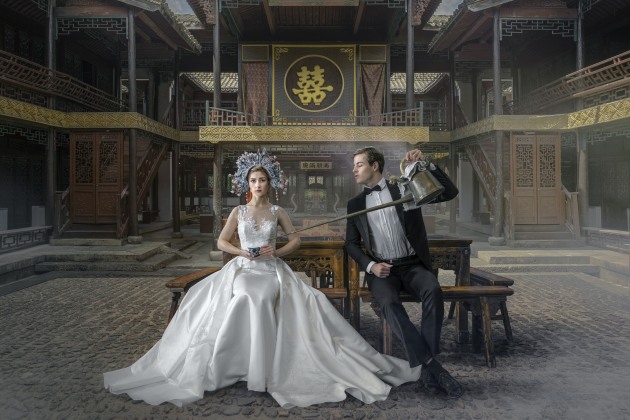
Contacts
Jerome Cole – jeromecole.com.au
Rowena Meadows – rowenameadows.com.au
Elizabeth Messina – elizabethmessina.com
Van Middleton – vanmiddleton.com
Roger Tan – instagram.com/rogertanphotography
Aries Tao – cloverimage.com.au

Get more stories like this delivered
free to your inbox. Sign up here.

